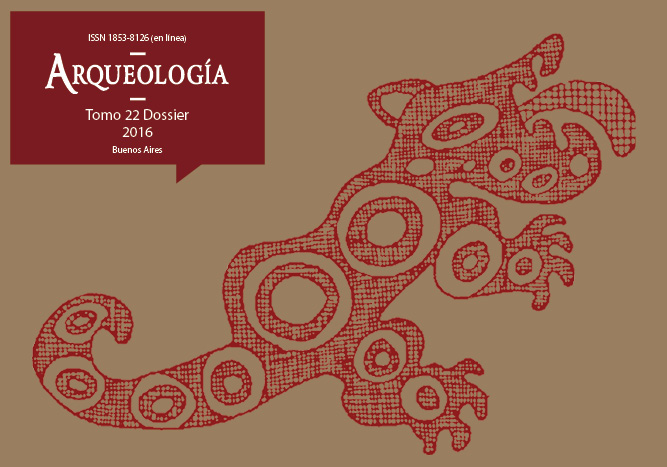Análisis de restos de roedores del sitio arqueológico Las Vueltas 1, Tierra del Fuego, Argentina
Palabras clave:
Cazadores-recolectores, Consumo de roedores, Cricetidae, Ctenomys magellanicus, Tafonomía, Zooarqueología
Resumen
Diversas especies de roedores se encuentran con frecuencia en los sitios arqueológicos del norte de Tierra del Fuego. Sin embargo, discriminar las vías de incorporación en los contextos arqueofaunísticos y su potencialidad resulta una tarea ardua. La identificación de aquellos restos que ingresaron por acción antrópica o por agentes naturales resulta necesaria para poder inferir el rol que tuvieron en la subsistencia humana. En este trabajo se estudian los restos de roedores del sitio arqueológico Las Vueltas 1 (Isla Grande de Tierra del Fuego, Argentina), donde representan el segundo taxón más abundante en la muestra. Se identificaron un total de 2191 elementos esqueletarios; 1488 corresponden al caviomorfo Ctenomys magellanicus y 703 a representantes de la familia Cricetidae, con al menos 4 especies. La interpretación tafonómica efectuada sugiere un origen múltiple; buena parte del material parece haber ingresado por la acción acumuladora de aves rapaces y cánidos y también por incorporación natural a través de muerte en madrigueras. No obstante y aunque en menor grado, hay evidencias de consumo y descarte antrópico en C. magellanicus.Descargas
La descarga de datos todavía no está disponible.
Cómo citar
Santiago, F. C., Salemme, M., & Pardiñas, U. F. J. (1). Análisis de restos de roedores del sitio arqueológico Las Vueltas 1, Tierra del Fuego, Argentina. Arqueología, 22(3), 211-230. https://doi.org/10.34096/arqueologia.t22.n0.3284
Sección
Artículos
Los autores/as que publiquen en esta revista aceptan las siguientes condiciones:
- Los autores/as conservan los derechos de autor y ceden a la revista el derecho de la primera publicación, con el trabajo registrado mediante Licencia Creative Commons 4.0 Internacional (CC-BY-NC-SA), que permite a terceros utilizar lo publicado siempre que mencionen la autoría del trabajo y a la primera publicación en esta revista.
- Los autores/as pueden realizar otros acuerdos contractuales independientes y adicionales para la distribución no exclusiva de la versión del artículo publicado en esta revista (p.e. incluirlo en un repositorio institucional o publicarlo en un libro) siempre que indiquen claramente que el trabajo se publicó por primera vez en esta revista.
- Se permite y recomienda a los autores/as a publicar su trabajo en Internet (p.e. en sus sitios web personales o en depósitos institucionales), tanto antes como después de su publicación en esta revista, siempre y cuando proporcionen información bibliográfica que acredite, si procede, su publicación en ella. De esta manera, pueden favorecerse intercambios productivos y a una mayor y más rápida difusión del trabajo publicado (vea The Effect of Open Access).



.png)

(1)13.png)






1.jpg)
1.png)
1.jpg)


13.png)
1.png)


(1)1.png)









